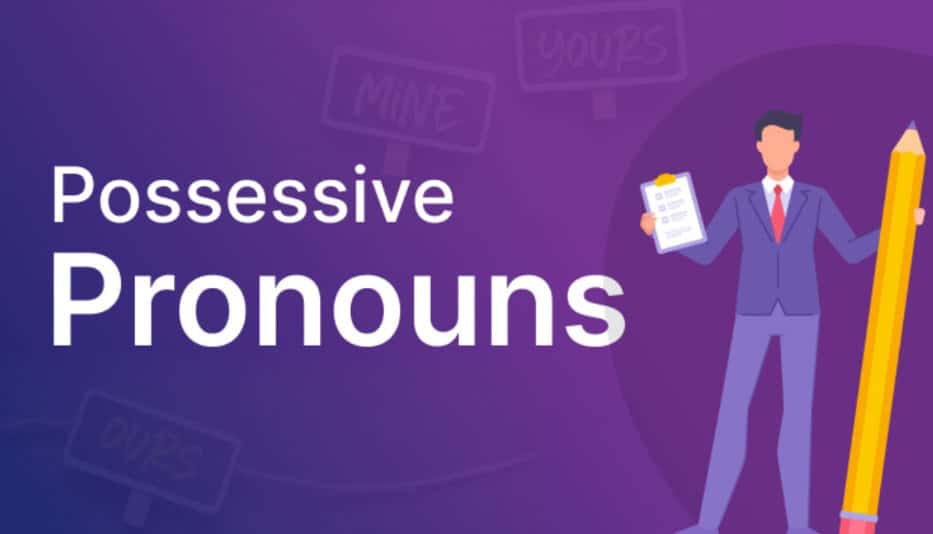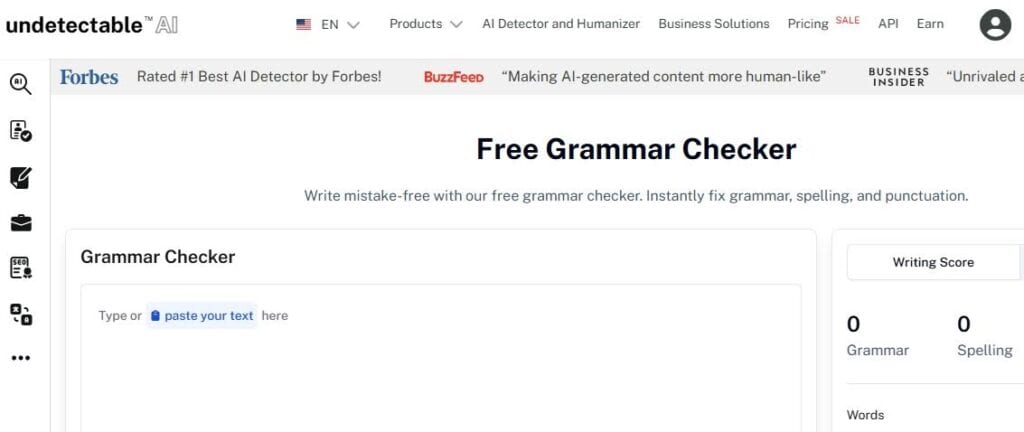Some people would bet a dollar that they have never used possessive adjectives if they were falsely accused in a prank. In reality, these words are unavoidable in daily communication.
Words like my, your, his, and their show up constantly in our speech. They’re how we tell people what’s ours or someone else’s.
This article unpacks what these words do, where they go in a sentence, and why they’re more useful than they get credit for.
Key Takeaways
- The are eight possessive adjectives.
- Some people may confuse them with pronouns.
- The natural position of a possessive adjective in a sentence is before a noun.
- Possessive adjectives show who owns what.
What Is a Possessive Adjective

Possessive adjectives are words in the English Language that show the type of person and how many people lay claim to a noun (person, animal, place, thing, or phenomenon).
Definition and Function
A possessive adjective is used to indicate ownership of a noun, whether it belongs to a person, animal, place, or thing. Examples include the following sentences:
- Her phone is missing
- Their house is on fire
- Where is my money
Notice from these examples that the adjectives (her, their, my) indicate ownership of the object or item they qualify.


Never Worry About AI Detecting Your Texts Again. Undetectable AI Can Help You:
- Make your AI assisted writing appear human-like.
- Bypass all major AI detection tools with just one click.
- Use AI safely and confidently in school and work.
They always come right before the noun and never stand alone. Compare this with how their corresponding pronouns are used:
| Pronoun | Possessive Adjective |
| I | my |
| you | your |
| he | his |
| she | her |
| it | its |
| we | our |
| they | their |
| who | whose |
Difference from Regular Adjectives
Adjectives can describe two things: what something is like and what it’s tied to.
Most adjectives describe what something is like. Big house. Fast car. Loud music.
Some adjectives don’t describe the noun; they show who it’s tied to. For example:
- That’s my book.
- Her voice was shaking.
You can’t use them like regular adjectives, either. There’s no “my-er” or “our-est.” And you don’t say “the my dog.” It’s just “my dog.”
Some grammar books call them determiners, but whether you call them adjectives or not doesn’t change how they work.
How They Show Ownership or Belonging
These adjectives do more than show physical ownership. They also cover relationships and more abstract kinds of connections.
- His idea made sense. (The idea belongs to him.)
- Her team won the match. (She’s part of the team.)
- Their reaction was honest. (They own that response.)
It’s not about how many things one owns. You can say “my book or my books”. Both work.
They also refer to people and animals, but “it” is never suitable for people. Whenever you don’t know a person’s gender, “their” is the best adjective to use.
Not sure what the word ‘your’ is doing in a sentence, whether as a possessive adjective or some other form in the sentence? Run the sentence through Undetectable Ask AI.
With a direct prompt requesting the tool to clarify the role the word plays in a sentence, our tool will identify the job the word is doing and can correct it if incorrect.

List of Possessive Adjectives
Here are the basic possessive adjectives found in the English language.
These are the ones you’ll be hearing and reading all the time:
- My: Used to indicate possession from the speaker or as a form of address (my phone, my friends)
- Your: Often combined with “s” to form “yours,” it is used to refer to possessions belonging to the listener or someone else (your shoes)
- His: for a male owner. (his jacket)
- Her: for a female owner. (her bag)
- Its: for a thing, animal, or concept. (its tail, its purpose)
- Our: when the speaker shares ownership with others. (our house)
- Their: for a group of people or when the gender is unknown. (their idea)
- Whose: when asking who something belongs to. (Whose keys are these?)
It doesn’t matter whether the noun is singular or plural.
The possessive adjectives remain unchanged. Suppose there is any change at all, it is to accommodate different genders.
Differences Between British and American Style (if any)
In British and American English, the rules around these forms don’t really change.
Both sides of the Atlantic use the same list: my, your, his, her, its, our, their, and whose.
The only divergence that might stand out is in register or choice around gender-neutral speech.
In American English, the singular they/their is now a mainstream practice and picking up speed. British English uses it too, but sometimes with a bit more caution in formal writing.
There’s also a stronger push in the US to avoid using gendered defaults like his/her. Instead, American writers and editors are more likely to favor “their” as a clean, inclusive solution.
Besides that, usage rules and sentence structure stay the same in both kinds of English.
How to Use Possessive Adjectives in Sentences
After you know their place in a sentence, it is simple to see how to use possessive adjectives. The main rule to note is that they come right before the noun they possess and function as an article (“the” or “a”).
Placement Before the Noun
Put it right before the noun. Do not separate with a comma, do not add an article, and do not try to move it anywhere. For example:
- Incorrect: I like the your idea
- Correct: I like your idea.
In case there are other adjectives, the possessive still goes first. For example:
- She nailed it in her new red dress.
- We have a big old house that needs fixing up.
Singular and Plural Examples
The possessive adjective does not change with respect to number. It is the same word in both cases. What changes is the noun, not the possessive adjective:
| Singular | Plural |
| My friend is here. | My friends are here |
| Their child is quiet | Their children are quiet |
Combining with Articles and Quantifiers
You do not use possessive adjectives with articles a, an, or the. They do not complement each other.
- Incorrect: The his car is outside.
- Correct: His car is outside.
However, you can use a possessive adjective with quantifiers like some, any, each, and every if it’s contextualized within a sensible structure. For example:
- All her teammates arrived on time.
Here, the possessive adjective is part of a longer phrase that still points to ownership.
Whenever you are in doubt about placement or agreement, or whether a sentence “sounds” right, run it by our Grammar Checker.
Our tool can be especially helpful when writing longer or more complex sentences in which ownership isn’t so clear.

Possessive Adjective vs Possessive Pronoun
It is quite easy to mix up possessive adjectives with possessive pronouns.
For one, both sets of words have to do with the same thing: ownership, and quite a lot of the words look or sound similar.
But, they don’t function in a sentence in the same way. One renames a noun. The other replaces it.
Key Differences in Form and Function
A noun does not necessarily follow a possessive pronoun.
While a possessive adjective describes whose noun it is, a possessive pronoun replaces the actual noun itself and can come as the subject, object, or complement of the sentence.
Some common examples are in this table:
| Subject Pronoun | Possessive Adjective | Possessive Pronoun |
| I | my | mine |
| you | your | yours |
| he | his | his |
| she | her | hers |
| it | its | — |
| we | our | ours |
| they | their | theirs |
| who | whose | whose |
His and whose are also possessive adjectives and pronouns, depending on usage.
Examples in Side-by-Side Sentences
To see the difference, compare these examples:
| Possessive Adjective | Possessive Pronoun |
| This is my seat | This seat is mine |
| She brought her notes. | Those notes are hers. |
| They forgot their keys. | The keys are theirs. |
One, as the owner of something, holds the noun in the sentence for identification with the owner, and the other completely replaces a noun phrase.
The one to go for depends on the structure of the sentence; if you are confused, a fast scan with a grammar checker will help.
Examples of Possessive Adjectives

The best and fastest way to learn possessive adjectives is to put them to use. All use cases are illustrated with explicit examples of each kind.
In every case, the adjective occupies its proper place, that is, in front of the noun it qualifies.
Simple Everyday Examples
Sentences are short and simple. The possessive adjective comes before the noun to show to whom the noun belongs.
- Did you look for your glasses?
- He is looking for his phone.
- Her room is painted green.
- The dog wagged its tail.
- We are ready to file our report.
- We have been invited to their party.
- Whose shoes are these at the door?
Multiple Possessive Adjectives in One Sentence
Using multiple possessive adjectives at a time, like in the examples below, is common:
- She dropped her coffee on his book.
- We forgot our keys in their car.
- He picked up his jacket and notebook from her desk.
- They brought their children and their friends.
- We reviewed our answers against your notes.
- Using several possessive adjectives in one sentence is similar—just be sure to keep track of who owns what.
Examples with Different Noun Types
Possessive adjectives do not change for number, humanity, or non-humanity of the noun.
See examples below of how they work in different contexts:
Singular Nouns:
- My idea met with a good reception.
- His friend has already arrived.
- Her dress is on the chair.
- Their toy spoiled yesterday.
Plural nouns:
- My ideas were pivotal.
- His friends are already here.
- Her dresses are in the closet.
Non-human subjects:
- The robot lost her balance.
- The company updated her policy.
- The engine failed because of her age.
Possessive adjectives stay the same. It is the noun that changes.
Examples in Questions
Possessive adjectives occur quite naturally in questions too. For example:
- What’s your opinion on this?
- Did you find my keys?
- Is this her notebook or his?
- Whose phone is ringing?
- Where’s their car parked?
In every case, the question will still require a noun after the possessive adjective, unless the speaker turns to a possessive pronoun, for instance, “Is this hers?”
Examples in Longer or Descriptive Sentences
Possessive adjectives are not restricted to short sentences. They flow equally well in long or descriptive sentences.
For example:
- Our final presentation was completed
- We went out for lunch.
- He said he forgot his appointment because he lost his calendar.
- She gave me her honest opinion.
- We stayed at their place last weekend.
- They stayed at our place the next night.
Examples of Incorrect Usage (and Fixes)
For a holistic view of how possessive adjectives work, it helps to see how they don’t work.
- Incorrect: I want to meet my.
Correct: I want to meet my friend. - Incorrect: Her is cooking dinner.
Correct: She is cooking her dinner. (Use “her” only when modifying a noun: her recipe, her kitchen.) - Incorrect: The its collar is red.
Correct: Its collar is red. (Don’t use “the” with a possessive adjective.) - Incorrect: This is the your seat.
Correct: This is your seat.
Getting these small details right makes your writing cleaner and easier to understand.
Using “Whose” as a Possessive Adjective
The word “whose” acts as a possessive adjective in questions. It shows ownership without saying who the owner is yet.
- Whose bike is that?
- Do you know whose book this is?
- Whose name is on the list?
Even though it’s a question word, whose still follows the rule: it appears directly before the noun.
Examples Using Gender-Neutral Language
Possessive adjectives are helpful too if you’re trying to avoid mentioning any specific gender.
- Each student should bring their laptop.
- Someone left their water bottle on the desk.
- Alex said their project was nearly done.
Most people accept ‘their’ as standard in modern English, using it as a singular, gender-neutral option that works well when the person’s real gender is not known or not relevant
Common Mistakes and How to Avoid Them
Knowing what to look for will lead you away from the common mistakes that quite a number tend to make when writing.
Even native speakers omit the use of possessive adjectives because some words seem or sound so much like other forms.
See correct versions of these common mistakes below:
1. Confusing “its” and “it’s”: This is a mistake that trips up a lot of writers. “Its” shows ownership and It’s” stands for either it is or it has
- The cat cleaned its paws.
- It’s snowing today.
- It’s been good to see you.
When you can swap the word for it is or it has, the apostrophe is right. Whenever the swap doesn’t work, stick with its.
2. Mixing Up “your” and “you’re”: These two sound identical but have completely different roles. To double-check, try replacing the word with you are.
Whenever it works, use you’re. Suppose it does not, stick with your. “You’re” is short for “you are” and “Your” is simply a descriptive for possession.
- You’re going to love this.
- Is this your phone?
3. Using “their,” “they’re,” and “there” Incorrectly: Don’t rely on sound alone. Pay attention to the role each word is playing, because these three words are often mixed up.
“Their” shows possession.
- Their car is parked outside.
“They’re” → they are
- They’re waiting for you.
“There” refers to a place or position
- The keys are over there.
4. Using Possessive Adjectives Without a Noun: Possessive adjectives must be followed by a noun.
On their own, they don’t make sense. For instance, saying, “That bag is my,” makes the sentence sound incomplete.
Suppose that the sentence must be written or said this way; then it will be better to replace the possessive adjective with its equivalent pronoun.
For instance, “That bag is mine.”
5. Repeating Possessive Phrases Too Often: Putting too many possessive adjectives in a single sentence tends to make communication dry.
Instead of sounding specific or precise, it sounds mechanical.
- Her tone changed when she saw her report next to her name on her teacher’s desk.
- That’s not wrong, yet it feels uptight. A gentler revision shifts the phrases or fuses them.
- Her tone changed when she saw the report with her name on her teacher’s desk.
Longer sentences like this are where the best writing tools can spot excesses and suggest a lighter touch.
In case your writing starts sounding stiff or repetitive, especially with phrases like his book, her chair, or their plan, back-to-back, use an AI tool to rework the flow.
Our AI Humanizer can help vary the structure, remove redundancy, and make your sentences sound more natural, while keeping your meaning clear.

Built for professionals—check and refine your content using the widget below.
Final Thoughts
Possessive adjectives are few; however, they are mighty. As long as you learn how they operate and where to put them, their differences from pronouns, and how to avert common related mistakes, you will use them confidently.
The important thing is to keep them right in front of the noun, keep them correlated to the right ‘subject,’ and not get them mixed up with homonyms.
In case you need extra help with possessive adjective usage or improving paragraph flow, Tools like our AI Humanizers can be invaluable.
The next time someone asks you, “What are possessive adjectives?” You’ll have the perfect answer.
Need help refining your grammar? Try Undetectable AI today.
